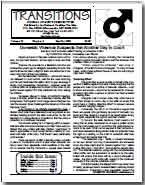
Earl Silverman was forced to close his shelter for abused men for lack of funds. National Post
Twenty years ago Earl Silverman of Calgary, fleeing his home to escape violence from his abusive wife, had no refuge to take shelter in. There were plenty of shelters for women victims of domestic abuse, but for men the only publicly funded services were for anger management.
The message was clear to Silverman: “As a victim, I was re-victimized by having these services telling me I wasn’t a victim, but I was a perpetrator.”
Three years ago, in his own home, Silverman opened the Men’s Alternative Safe House (MASH), which until last week held the distinction of being the only privately funded shelter for male victims of domestic abuse in Canada. Now, with no public funds to help, the maintenance and grocery bills associated with running his shelter have become too onerous for him to handle. Silverman has sold his home.
This story did not light up the switchboards, metaphorically speaking, of the media and government ministries. Stories of men’s suffering rarely do, unless they are of the magnitude of a coal mine collapse or an oil rig swept out to sea.
There was exactly one letter to the editor of the National Post on the matter — from a woman — and it was crisply unsympathetic. The London, Ontario reader scolded: “Do men think government or some other benefactor established women’s shelters? In the 1970s, when the extent of family violence came to the attention of feminists, they organized committees in many communities, fundraised and opened shelters.”
It is true that women have been pro-active and highly successful in organizing themselves and raising consciousness about women’s suffering and formerly diminished domestic rights. It is also true that men do not have the same instinct for collective action in their own interests. They are far more likely than women to lick their wounds in silence and in solitude. Men who suffer abuse from women, in particular, are — out of gallantry or embarrassment — ashamed to publicly admit they have been physically victimized by a woman.
Which doesn’t mean it doesn’t happen. It happens with virtually the same frequency and almost always the same level of violence that women experience from men. We have been down this road many times before, but the myth persists that only women can be victims of domestic violence, and that when they do become violent, it is only in self-defence or from repeated provocation.
But to return to the letter-writer’s question, and her allusion to the feminists in the 1970s who organized women’s shelters. I wonder if she is familiar with the name of the woman who inspired that Canadian shelter system for “battered wives,” as they were then called.
Her name is Erin Pizzey. Pizzey set up the world’s first refuge for abused women in London, England 1971, and devoted her life to promoting an international movement for victims of domestic abuse. Shouldn’t she be famous for this watershed contribution to women’s empowerment? Yes, she should be. But I am going to bet that the Post’s letter writer never heard of her, and further bet that Pizzey’s name is a blank to 99% of Western women. Why?
Because Erin Pizzey committed a cardinal sin in the eyes of feminists. Although she had assumed, when she opened her first shelter, that only women would apply for refuge, she found that boys and men also needed her help, and she did not turn them away. Through experience and countless candid conversations with the women who sought her help, she came to realize that many of her abused female clientele were dishing it out as much as they were receiving it — and not because they were provoked or in self-defence. In other words she committed the sin of even-handedness, of recognizing that women can be as abusive to their partners — and certainly as or more abusive to their children — as men.
No matter who runs the data, as long as the methodology is sound, researchers keep coming to exactly the same conclusions. In Canada, 8% of Canadian women report being physically abused annually; and 7% of men report the same. Abused men need places of refuge and it is a disgrace that there are none for them. But until Erin Pizzey’s name becomes honoured amongst feminists, the myth that men cannot be victims of domestic violence will live on.
Barbara Kay, Wednesday, Mar. 27, 2013
National Post
Source: Barbara Kay: Our male-victimizing myths live on (http://www.nationalpost.com/m/wp/full-comment/blog.html?b=fullcomment.nationalpost.com/2013/03/27/barbara-kay-our-male-victimizing-myths-live-on)


